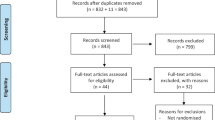Abstract
Design Single-blind randomised cross-over trial.
Intervention The study compared solution deposition pain of a maxillary lateral incisor infiltration between a computer-controlled local anaesthesia delivery device (Dentapen) and traditional syringe. The Dentapen was given with a slow flow rate of 1.8 mL/162 sec and ramp-up mode, and the traditional syringe infiltration was delivered at a flow rate of 1.8 ml/60 sec. Patients were randomly assigned to a sequence to receive both interventions at two separate appointments, with each participant acting as their own control. Patients rated the pain of each intervention using a Heft-Parker visual analogue scale and completed a preference survey at the conclusion of the second appointment.
Case selection A total of 130 adult patients with ASA I or II were included in the study. Criteria for exclusion were patients under 18 years of age or older than 65, allergies to local anaesthetics or sulphites, pregnant or nursing, history of significant medical conditions (ASA III or higher), taking any medications that may affect pain assessment, active pathosis at the injection site, or inability to give informed consent.
Data analysis Differences in pain of solution deposition for the Dentapen and traditional infiltration techniques were analysed using paired t-tests and odds ratios. Interactions between study groups, gender and anxiety were analysed using a linear mixed-effect model with a P value <0.05.
Results Solution deposition pain was significantly less (P <0.001) with the Dentapen infiltration than the traditional infiltration. The preference survey revealed that 75% of patients preferred the Dentapen infiltration over the traditional technique.
Conclusions The findings of this clinical trial suggest that pain during maxillary lateral incisor infiltrations can be reduced by using the Dentapen with a slow flow rate and ramp-up mode compared with the traditional syringe technique.
This is a preview of subscription content, access via your institution
Access options
Subscribe to this journal
Receive 4 print issues and online access
$259.00 per year
only $64.75 per issue
Buy this article
- Purchase on Springer Link
- Instant access to full article PDF
Prices may be subject to local taxes which are calculated during checkout

Similar content being viewed by others

References
Mikesell A, Drum M, Reader A, Beck M. Anaesthetic efficacy of 1.8 mL and 3.6 mL of 2% lidocaine with 1:100,000 edrenaline for maxillary infiltrations. J Endod 2008; 34: 121-125.
Evans G, Nusstein J, Drum M, Reader, A, Beck M. A prospective, randomized double-blind comparison of articaine and lidocaine for maxillary infiltration. J Endod 2008; 34: 389-393.
Kudo M. Initial injection pressure for dental local anaesthesia: effects on pain and anxiety. Anesth Prog 2005; 52: 95-101.
Primosh R E, Brooks R. Influence of anaesthetic flow rate delivered by the Wand local anaesthetic system on pain response to palatal injections. Am J Dent 2002; 15: 15-20.
Partido B B, Nusstein J M, Miller K, Lally M. Maxillary lateral incisor injection pain using the Dentapen electronic syringe. J Endod 2020; 46: 1592-1596.
Author information
Authors and Affiliations
Ethics declarations
The authors declare no conflicts of interest.
Rights and permissions
About this article
Cite this article
Girdler, J. Dentapen versus traditional syringe infiltration - which LA technique is preferred by patients?. Evid Based Dent 23, 100–101 (2022). https://doi.org/10.1038/s41432-022-0811-4
Received:
Accepted:
Published:
Issue Date:
DOI: https://doi.org/10.1038/s41432-022-0811-4


